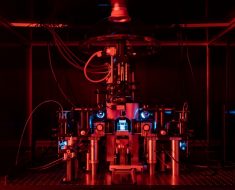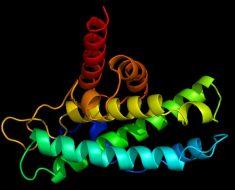A recent study published in Viruses reviewed the characteristics of neuraminidase (NA) with emphasis on the development of NA-based universal influenza vaccines.

Background
Influenza causes significant morbidity and mortality worldwide. The influenza virus harbors two glycoproteins on the surface – hemagglutinin (HA) and NA. Infection- or vaccine-induced immune responses are targeted toward HA. Besides, NA-specific antibodies confer protection and can reduce infection severity.
Existing seasonal influenza vaccines confer narrow immune responses specific to the strain, and their efficacy depends on how well the vaccine strains match those in circulation. Thus, universal influenza vaccines with high breadth and potency are required. In the present study, the authors discussed the characteristics of NA, anti-NA antibodies, and recent progress in developing NA-based vaccines.
Role of NA in the viral life cycle
Currently, influenza viruses of four types (A – D) exist. Influenza A viruses (IAVs) are further sub-classified based on NA and HA subtypes. At present, only two subtypes –H1N1 and H3N2, are endemic in the human population. The viral life cycle starts with the attachment of HA to host cell surface sialic acid (SA) receptors.
Newly-assembled virions remain bound to SA receptors following the infection cycle, and NA’s sialidase activity releases them from the host cell. This activity also facilitates the removal of surface SA residues, preventing newly-assembled viral particles from aggregating, which improves viral infectivity.
Structure and function of NA
The homotetrameric NA is anchored in the viral envelope. Each monomer comprises a head, stalk, transmembrane domain, and cytoplasmic tail. The cytoplasmic tail is highly conserved across IAV subtypes and plays a critical role in NA incorporation. The stalk’s length also influences virulence and enzymatic activity. Besides, glycosylation can affect infectivity and virulence, with glycosylation loss on NA and HA implicated in improved virulence.
The head of NA is mushroom-shaped and responsible for cleaving SA and viral release from host cells. The tetrameric structure is vital for enzymatic activity and inducing antibodies. NA is also involved in cellular entry by direct receptor attachment, helping release virions attached to sialylated decoy receptors or complementing HA’s binding.
Immune responses
Antibodies eBook

Newer strains with minor structural changes emerge due to antigenic drift attenuating the potency of pre-existing antibodies. Hence, upgraded versions of vaccines that match the strain in circulation are required for protection. Anti-HA antibodies can also block NA action by sterically blocking NA’s access to substrates or inhibiting viral binding to the NA substrate bound to the surface.
NA, like NA, undergoes antigenic drift at a slower rate independently of HA. This makes NA a promising target for developing a universal influenza vaccine. Vaccine-elicited immune responses are skewed towards HA, whereas infection elicits a more balanced response with antibodies against NA and HA. Studies in mice indicated that anti-NA antibodies reduce lung viral titers.
Moreover, isolated human monoclonal antibodies (mAbs) against NA can decrease airborne transmission of IAV when administered after infecting guinea pigs. Anti-NA antibodies are predominantly non-neutralizing since they act in later phases of the viral life cycle. As such, viral titers are usually unaffected in plaque reduction assays, but the diameter of plaque reduces in the presence of anti-NA antibodies.
The active site of NA has eight functional and 11 framework residues highly conserved across NA subtypes. A group of researchers identified a conserved linear epitope near the active site, and mAbs against this epitope could bind to nine NA subtypes. Two residues (I222 and E227) were critical for mAb binding, and I222A and E227A substitutions were shown to abrogate the inhibitory effect of mAbs.
Universal vaccine for influenza
The quantity of HA is standardized in seasonal vaccines, while that of NA is not and varies between manufacturers. Efforts for a broadly-reactive influenza vaccine have been mostly centered on HA, with less attention on NA. Nonetheless, studies have reported that NA-based vaccines could induce broadly-protective antibodies.
Identifying conserved epitopes on NA can help design vaccines that trigger lymphocytes to mount immune responses against the conserved epitopes. Recently, this approach was adopted, and a conserved NA epitope was incorporated into the head domain of HA, which formed a chimeric antigen.
In addition, a self-assembling nanoparticle with a conserved NA epitope and two universal T-cell epitopes has been demonstrated to enhance immune responses. The quantity of NA in vaccines correlates with antibody responses; therefore, increasing or standardizing the amount of NA can improve vaccine effectiveness.
Conclusion
There has been significant progress in developing a universal vaccine against influenza. The viral NA is being extensively studied in this direction since NA has a lower rate of antigenic drift than HA. Besides NA, other HA head and stem and M2 ion channel approaches have been explored for a universal vaccine. More research into NA-based immune responses and their mechanisms can contribute to designing broadly-protective and durable influenza vaccines.
- Abbadi, N. and Mousa, J. (2023) "Broadly Protective Neuraminidase-Based Influenza Vaccines and Monoclonal Antibodies: Target Epitopes and Mechanisms of Action", Viruses, 15(1), p. 200. doi: 10.3390/v15010200. https://www.mdpi.com/1999-4915/15/1/200
Posted in: Medical Science News | Medical Research News | Disease/Infection News
Tags: Antibodies, Antibody, Antigen, Cell, Efficacy, Glycosylation, H1N1, H3N2, Influenza, Ion, Ion Channel, Mortality, Mushroom, Nanoparticle, Receptor, Research, T-Cell, Vaccine, Virus

Written by
Tarun Sai Lomte
Tarun is a writer based in Hyderabad, India. He has a Master’s degree in Biotechnology from the University of Hyderabad and is enthusiastic about scientific research. He enjoys reading research papers and literature reviews and is passionate about writing.
Source: Read Full Article





